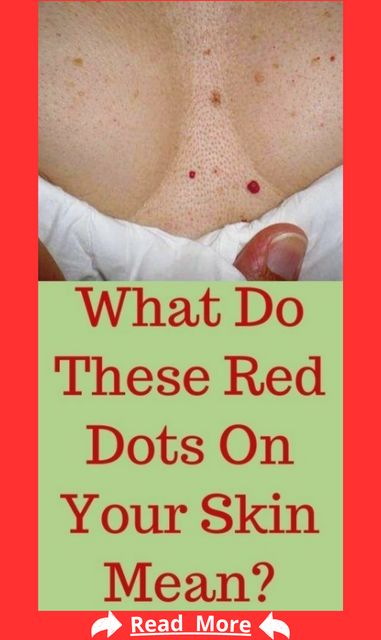A person may notice red spots on their skin for a number of reasons, from allergic reactions to heat exposure.
Many causes of red dots on the skin are harmless and resolve on their own. Others may require home or over-the-counter (OTC) treatment.
In this article, we will discuss some of the causes of red dots on the skin, their treatment options, and when to contact a doctor.
Fig
When to seek emergency help
Skin rashes vary in size, color and texture.
Not all rashes require immediate medical attention. However, people should seek immediate medical attention if they develop a rash and notice any of the following symptoms:
rash all over the body
fever
blisters or open sores
Difficulty breathing, speaking and swallowing
swelling of the face, eyes and lips
stiff neck
light sensitivity
seizures
drowsy or unresponsive
People should seek immediate medical attention if they develop a new rash with pain in the eyes, inside the mouth, or on the genitals.
When in doubt, a person should consult their primary care provider or a board-certified dermatologist.
Heat rash
When heat rash, or miliary, blocks the sweat glands, sweat accumulates in the deeper layers of the skin.
Heat rash can happen to anyone, but it is most common in infants and young children whose sweat glands are immature.
Symptoms of heat rash include:
clusters of small red bumps called papules
a hard, flesh-colored bump
itching or tingling sensation
mild or absent sweating in the affected area
inflammation and pain
dizziness
nausea
Treatment
A heat rash usually disappears within 24 hours.
Treatment usually uses lotions to relieve itching, irritation, and swelling.
People can keep their skin cool and avoid tight clothing.
Here’s how to treat heat rash.
Keratosis Pilaris
Keratosis pilaris (KP) is a common skin condition that causes small red, white, or flesh-colored bumps on the skin.
It usually affects the outer parts of the upper arm. It affects the forearms and upper back, but is less common.
Symptoms of KP are:
rough or dry skin
small, painless bumps on the skin
itching
Treatment
People can treat KP symptoms by:
Moisturizers containing urea or lactic acid
alpha hydroxy acid
glycolic acid
lactic acid
retinoids
salicylic acid
laser or light therapy
Learn more about home management for KP here.
Contact dermatitis
Contact dermatitis occurs when the skin comes into contact with a substance that irritates or causes an allergic reaction.
Symptoms of contact dermatitis vary depending on the triggering factor and the severity of the reaction.
Symptoms of contact dermatitis include:
A rash that appears in a geometric pattern or shape
dry and cracked skin
bright, red skin rash
clusters of small red dots on the skin
hives, or a very itchy rash on the skin
strong itching, tightening and burning sensation
the fluid-filled blisters slough off and form crusts
dark, thickened skin
sensitivity to sunlight
Learn more about contact dermatitis here.
Treatment
Treatment for contact dermatitis depends on the cause and severity of the individual’s symptoms.
Mild to moderate symptoms improve when a person avoids irritants and allergens. If possible, people should:
Avoid skin care products that contain harsh or irritating chemicals
Avoid nickel or gold plated jewelry
Avoid using foods and medicines that cause allergic reactions
wear protective clothing in the work environment or in areas with poisonous plants
If the skin inflammation is limited to a small area, a person can apply 1% hydrocortisone cream.
Doctors may prescribe stronger topical or oral antihistamines for people who don’t respond to OTC medications.
Atopic dermatitis
Atopic dermatitis, also known as eczema, is a chronic inflammatory skin disease.
There are many types of eczema, including:
Follicular eczema: This type of eczema affects the hair follicles.
Papular Eczema: This is a small red bump on the skin called a papule by health professionals.
In addition to red spots on the skin, eczema can cause:
very itchy skin
heat and swelling of the skin
dry, flaky skin
small, fluid-filled blisters
a blister that oozes fluid and crusts over it
Treatment
People can manage the symptoms of atopic dermatitis and prevent it from getting worse by following these treatments:
taking prescription medications such as steroids and antihistamines
phototherapy or light therapy
Apply moisturizer to treat dry, chapped skin
use odorless and non-irritating detergents
Avoid irritants such as dry air, stress, and allergens
The doctor above
